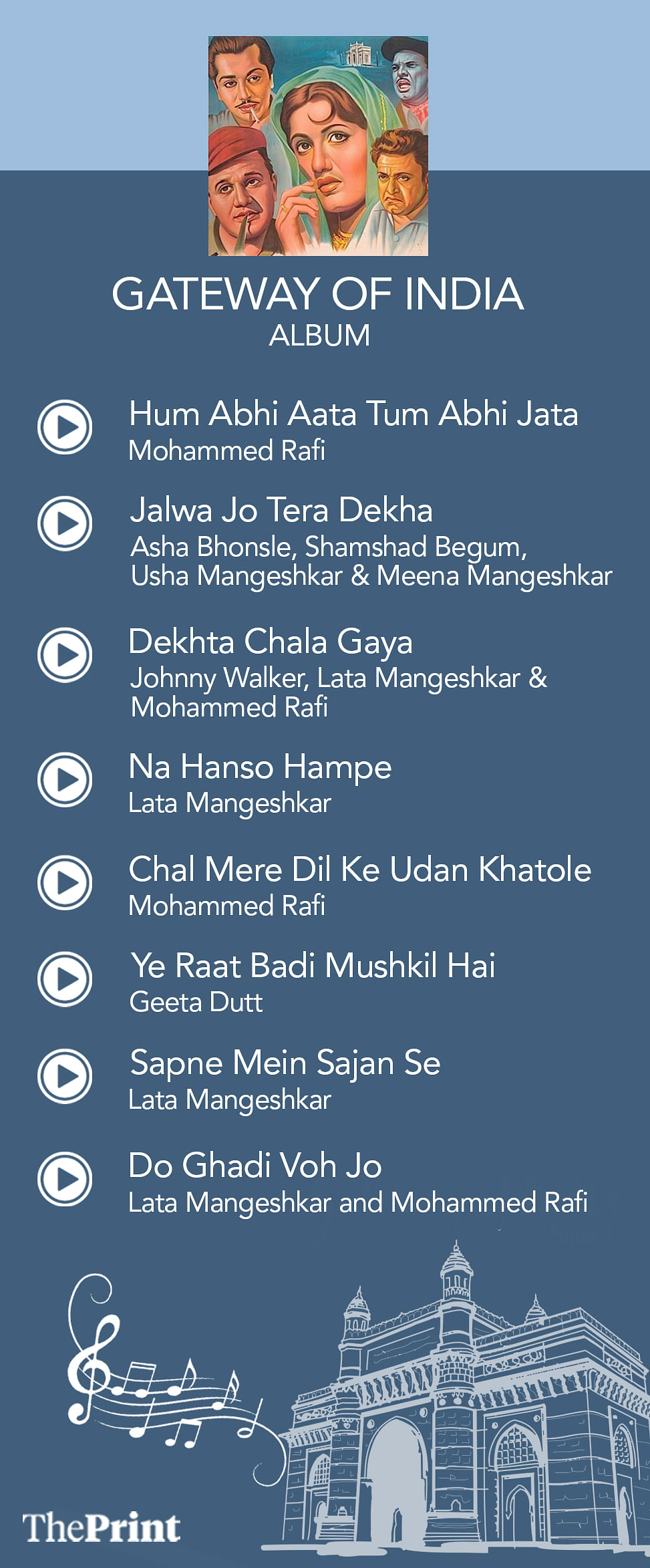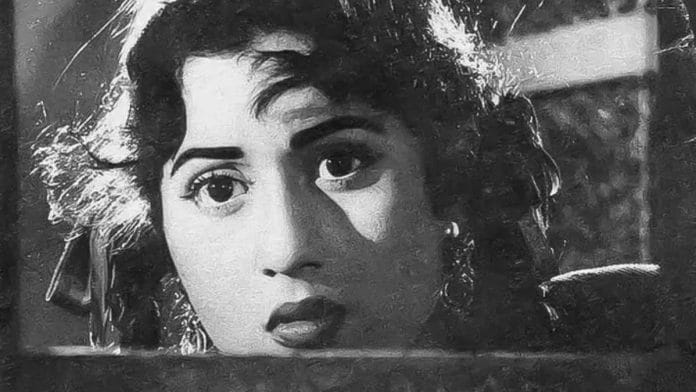Om Prakash knew exactly how to keep viewers at the edge of their seats. In his 1957 black comedy movie Gateway of India, starring Madhubala, there’s one burning question: What will unfold at 6.30 am at Mumbai’s iconic landmark.
The story unfolds over a single night, which in itself is unusual for Bollywood at the time, where plots often spanned generations. Gateway of India stands out as one of the earliest films to compress its plot into just a few hours, showcasing the highs and lows within that tight time frame.
Anju (Madhubala) is a young heiress, who is the only witness to a murder. She elopes from the shackles of her uncle, only to encounter a shadier crew. With clever resolve, she vows to rendezvous with each of them at the Gateway of India at dawn. But secretly, she’s weaving an intricate scheme of her own.
Raj Khosla’s Solva Saal (1958) is another example of such one-day plots. Today, however, the format has become rather popular from Kareena Kapoor’s Chameli (2003) to Anushka Sharma’s NH10 (2015).
Gateway of India collected Rs 0.45 crore (equivalent to Rs 91 crore in 2018) at the box office, emerging as the 19th highest-grossing film of 1957. According to the Silhouette magazine, the film was a moderate commercial success. Film critic and author Deepa Gahlot included Gateway of India in her book Take-2: 50 Films that Deserve a New Audience (2015)
A Madhubala show
Deglamorised Madhubala as Anju is clever. She is witty and resourceful. And, above all, she isn’t a damsel in distress. Running from her uncle, throughout the night, she encounters multiple crooks—played by Johnny Walker, Bhagwan Dada and Om Prakash.
When a small-time crook Abdul (Walker) tries to swindle Anju under the assumption that she is naive, she flips the script. Using her charm and wit, she convinces Abdul that she’s not a helpless woman but, in fact, a thief herself, on the run with a huge fortune. She weaves a tale so convincing that Abdul, fascinated by the prospect of wealth, completely forgets his original plan.
Madhubala’s comic timing shines as she deftly manipulates Abdul, playing up her innocence one moment and switching to a street smart, savvy woman the next.
Walker’s confused expressions and bumbling attempts to assist her add layers of comedy, making this one of the most entertaining and well-executed sequences in the film.
But, after a while, the storyline starts getting repetitive. Anju is always running into yet another crook, and sure enough, she’ll outsmart him with the same trick—telling him to meet her at Gateway of India at 6:30 am the next morning. It’s like a running gag that gets old the third time around.
Interestingly, when Raj Kapoor did the same in Jagte Raho (1956), his encounters at each house—where something shady was going on—were brief and to the point. The pacing kept things moving swiftly, avoiding any sense of repetition—which isn’t the case with Prakash’s Gateway of India.
Then comes the grand finale, packed with unnecessary shrieking by Anju and melodrama that feels a bit forced.
While Anju takes the storyline to its expected conclusion, the climactic moment — when all crooks arrive at Gateway of India—is a little underwhelming when compared to the anticipation built up throughout the film.
Also read: A courtesan without shame or guilt—1966 film ‘Amrapali’ gave us a proud, powerful heroine
A musical treat
Gateway of India could pass off as a musical. It has a total of eight songs. Whenever she meets a new person, there is a song in each scene.

For instance, Anita Guha, who plays Kishore’s (Pradeep Kumar) girlfriend, dances to “Yeh raah badi mushkil hai” as she tries to warn Anju about Kishore’s charming words. Or the final musical duet between Anju and Prakash serves as a celebration of love, shining brightly amid the surrounding chaos.
Madan Mohan’s compositions like ‘Na hanso humpe zamaane ke hain thukraaye hue’ and ‘Dekhta chala gaya main zindagi ki raah mein’ stand out as memorable highlights.
These songs evoke a deep sense of nostalgia and bring a feel-good vibe that resonates with listeners.
Mohan is celebrated for pioneering the fusion of English and Western jazz influences in Bollywood as early as 1957, with Gateway of India being one of his notable projects. A particular gem from his repertoire is the duet “Dekhta Chala Gaya,” featuring the iconic voices of Lata Mangeshkar and Mohammed Rafi, which continues to capture the hearts of audiences with its melodic charm and emotional depth.
The film’s charm lies largely in its cast, featuring talents like Anita Guha, Bhagwan, Pradeep Kumar, Bharat Bhushan, Johnny Walker, and Om Prakash. Each actor is given ample screen time to showcase their skills, allowing their individual talents to truly shine.
Among them, the comedic chemistry between Walker and Madhubala steals the show. Their playful banter feels effortless, and their impeccable comic timing keeps the audience in stitches. Their interactions not only add humour but elevate the film, making it a memorable watch.
So, why Gateway of India wasn’t a success? It is perhaps because the story was too unconventional for an audience that craved the usual masala fare. Or maybe the idea of a strong, independent female lead was too much of a departure from the norm.
(Edited by Ratan Priya)






